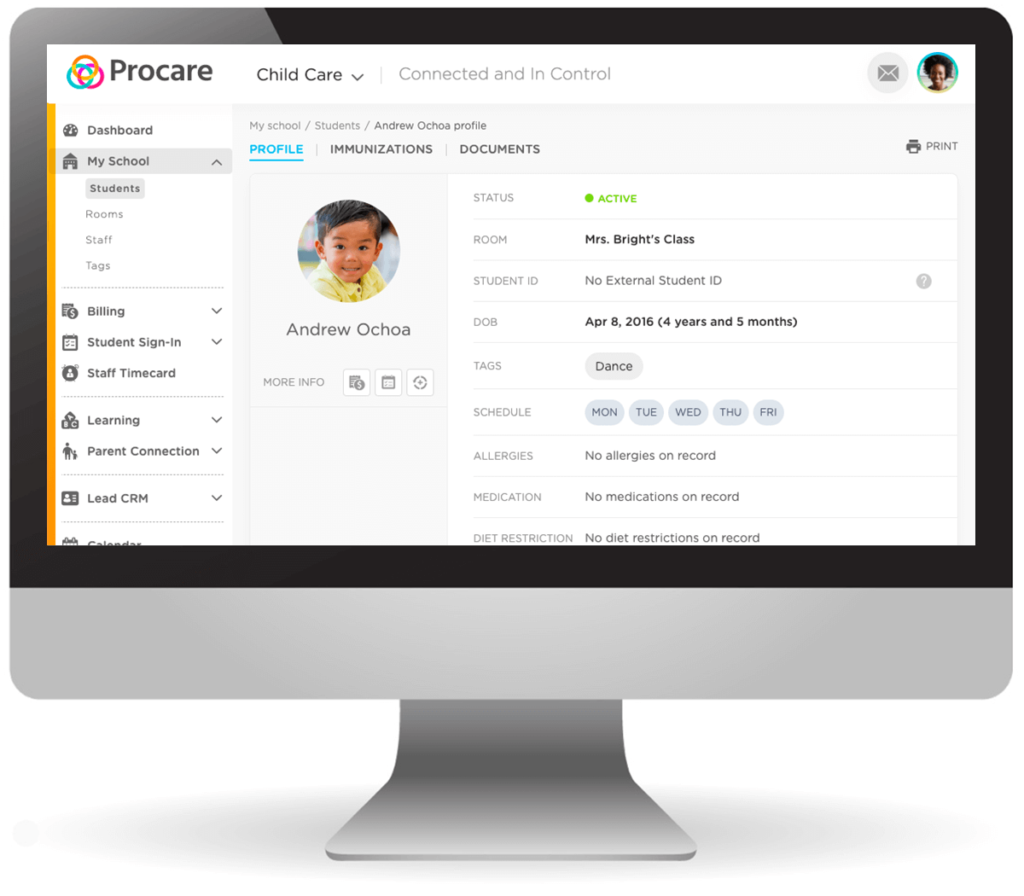
The past 12 months have been extremely challenging for the child care business – but we’re hopeful for a number of changes that could help our industry recover and thrive in 2021.
In this blog post, we’ll take a look back at some of the challenges our industry faced over the past year. Next, we’ll highlight some of the biggest hurdles that our child care industry is facing as it begins to recover from the effects of the global pandemic. Lastly, we’ll identify some of the biggest changes that could potentially impact the child care business in 2021.
Emerging from 2020: A Recovering Child Care Industry
Before we can start looking ahead, it’s important to understand the state of the child care industry today.
In March of 2020, as COVID-19 cases spiked across the country, child care businesses shut down their operations to help reduce transmission in our communities. Centers that closed had to furlough their staff, resulting in widespread job losses for child care providers. Some centers experienced near 100% revenue losses and chose to close permanently.
Other child care centers remained open to continue providing care for the children of essential workers. These centers incurred additional costs for PPE and cleaning supplies while operating at reduced capacity due to social distancing guidelines. As a result, many of them were operating at a loss, and some ultimately closed their doors due to sustained financial losses.
In total, COVID-19 had a devastating impact on our child care industry in 2020. By the end of 2020, our trend reports showed that child care centers nationwide were operating with attendance rates around 40-60% of pre-coronavirus levels. As of December 30th, roughly 1 in 4 child care centers across the country remained closed because of coronavirus.
Despite these challenges, two things happened at the end of 2020 that should help expedite the recovery of the child care industry:
- The coronavirus vaccine rollout began in December, with hospitals across the United States receiving millions of doses of FDA-approved vaccines against COVID-19.
- The $900 billion COVID-19 relief bill was signed into law on December 28th, allocating an additional $10 billion in grants to child care businesses.
Additional child care grants will help more centers cover their losses and stay open for business, while a successful vaccination program could bring an end to this pandemic and help the child care industry fully recover in 2021.
3 Major Child Care Challenges in 2021

As we enter a new year, we know that many child care businesses are struggling to keep their doors open and turn a profit in this new environment – but those aren’t the only challenges we’re facing.
Below, we explain the three major challenges that our child care industry needs to overcome to achieve a full recovery in 2021.
Child Care Enrollment & the She-cession
For child care businesses operating with reduced capacity in 2021, the number-one priority is recovering enrollment to pre-coronavirus levels. In many states, child care centers aren’t permitted to operate at full enrollment due lowered ratios informed by social distancing requirements. These requirements won’t be lifted until a successful vaccination program decreases COVID-19 transmission in our communities.
Child care enrollment recovery also depends on our overall economic recovery from COVID. The pandemic disproportionately impacted industries like retail and hospitality that are female-dominated, creating what economists have termed a she-cession. As these women lost their jobs, many transitioned to stay-at-home-mom roles and removed their children from child care. A majority of those kids won’t be returning to child care centers until those industries recover and their parents go back to work.
Child Care Accessibility
Child care accessibility was already a significant issue before the COVID-19 pandemic.
In 2016, the Early Childhood Program Participation Survey found that 50% of American families had difficulty accessing affordable, high-quality child care programs. The National Survey of Children’s Health administered in the same year found that over 2 million parents had made major sacrifices in their careers due to problems accessing child care. The reality before COVID was that half of Americans families lived in areas with more demand than supply for child care services.
The COVID-19 pandemic has added to the child care accessibility issue. Compared to early 2020, there are now fewer child care centers open and fewer child care slots available. As a result, the huge demand for child care services can’t be met by the centers that are currently open for business. This is a large challenge for our communities, as well as a significant opportunity for child care providers who want to start businesses in 2021.
Child Care Affordability
Child care accessibility and affordability are issues that go hand-in-hand. Before the coronavirus pandemic, the average American family spent 23% of their net income on child care services – that’s 16% more than the 7% benchmark for affordable child care set by the U.S. Department of Health & Human Services. As a result, child care services were already unaffordable for millions of Americans who either rely on family members or sacrifice their career prospects to raise kids.
During COVID, the child care affordability crisis got even worse.
Many centers that remain open are operating at a loss, making it unrealistic for them to reduce prices. Centers also have additional costs for PPE, cleaning supplies and infection prevention equipment that ultimately get passed on to parents in the form of increased child care tuition.
Making child care services more affordable would have great benefits for our economy, but COVID moved the needle in the opposite direction. That’s why government support is critical – more on that shortly.
What Changes Could Impact the Child Care Industry in 2021?

New Government Supports for Child Care Businesses
In 2020, the U.S. government responded to the COVID crisis by providing additional support for child care businesses. The CARES Act included $3.5 billion in child care grants through the Child Care Development Block Grant (CCDBG), and another $10 billion in grants were approved on December 28th through the Consolidated Appropriations Act.
In 2021, we’re expecting more Federal funding to support child care businesses through the recovery from COVID. The House just passed Biden’s $1.9 trillion COVID relief bill, which includes a number of measures targeted at helping the child care industry. These include a $25 billion emergency fund, $15 billion in additional child care grants, and an expansion to the child care tax credit that would make child care services far more affordable for millions of Americans.
If the bill becomes law, it will provide much-needed support that will accelerate the recovery of our child care industry.
Wage Increases for Child Care Workers
Wage increases could be coming for child care workers in 2021. A proposal to increase the Federal minimum wage to $15/hour by 2025 would result in wage increases for child workers in most states, especially those with no state minimum wage laws.
Child care workers in the United States earn an average of $22,000 annually, but a $15 minimum wage would see full-time child care workers earning at least $30,000 per year. A better deal for child care workers could result in more qualified people entering the profession and more widespread availability of child care services for U.S. families.
Vaccines Save the Day
With the vaccine rollout gathering steam in the United States, beating the COVID virus is our best hope of seeing the child care industry return to normal in 2021. The great news is that the United States is one of the leaders in the worldwide vaccination effort, and is currently administering more than 1.6 million doses each day to citizens.
As more Americans get vaccinated against the virus, we should start to see reductions in community transmission, lower case counts and eventually, reduced health and safety restrictions for child care centers. We should also see recoveries in the retail and hospitality sectors, prompting parents to return to work and increasing the demand for child care services. As these changes happen and child care centers start to resume normal operations, parents will feel more comfortable sending their kids to child care.
Meet the Child Care Challenges of 2021 Head-On with Procare Solutions

Thousands of child care centers may require federal assistance to stay open and continue serving their communities in 2021. As the recovery process continues, centers are exploring new ways to boost their enrollment numbers while lowering operating costs. That’s where Procare Solutions can help.
For over 30 years, Procare has supported child care businesses through every challenge with solutions and technologies that ease the burden of child care center management. With our child care app, your center will be able to:
- Digitally track child care leads, manage your waiting list for child care services, and offer online registration to streamline the enrollment process.
- Leverage contactless check-in/check-out and automated billing & payments to continue fighting the spread of COVID-19.
- Engage parents with direct & mass communications to build strong relationships and elevate customer retention at your child care center.
Ready to see how Procare Solutions can help you meet the child care challenges of 2021?



